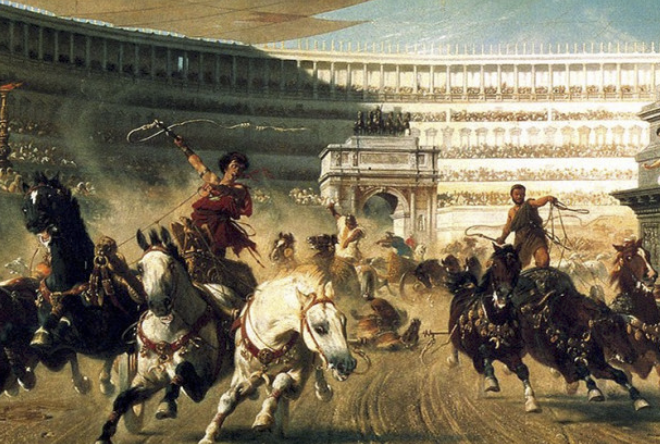Horse racing is an activity that takes place in many countries, but if you are in an ancient Greek arena then you will have to shiver because of their bloody.
Ancient Greece was famous for its extremely developed civilization. They are also redeemers of cultural and sporting activities.
The name Olympic comes from the venue of this Games, which is the city of Olympia, where the temple of Zeus, the supreme deity in Greek mythology. Like the modern Olympic Games, the ancient Greek Olympic Games are held every 4 years.
According to historical records, the first Olympic Games was held in 776 BC, 2788 years ago. Ancient Greek Olympic Games (684 BC) had horse racing. Horse racing is a popular sport in the ancient Greek, Roman and Byzantine empires, … attracting viewers no less than other dangerous and dramatic sports.
This sport is included in the ancient Olympic games as a competition all Greece (Panhellenic Games). The track is approximately 195 meters long, with the number of draft horses varying depending on their nature and appearance.

The drama on the track, the danger for the participants and the horse all make the audience feel excited and nervous waiting for the winner. It is not known when they actually took place, but the first mention of this game came from Homer – one of the greatest and most famous poets in ancient Greece.
Horse racing is also a sport only for the wealthy aristocracy, because only they can afford to buy the rare thoroughbred horses and pay the participation fee. The size of the organization was also what made equestrian racing no less than any sport at that time, extremely large squares were built for this sport.
With a length of 400 meters, a width of 200 meters, can accommodate up to 40,000 for the audience. Hippodrome is truly an impressive arena with bloody fights of gladiators and dramatic horse races.
By the 6th century AD, horse breeds in Arab countries in the Middle East were well known.
These horses are superior to other horse breeds and are incredibly fast. Arabian horse breeds have since become a very rare breed, making European desires so far. If many other sports forbid women from watching, horse racing is an exception, so the number of viewers is no less than any other sport.
